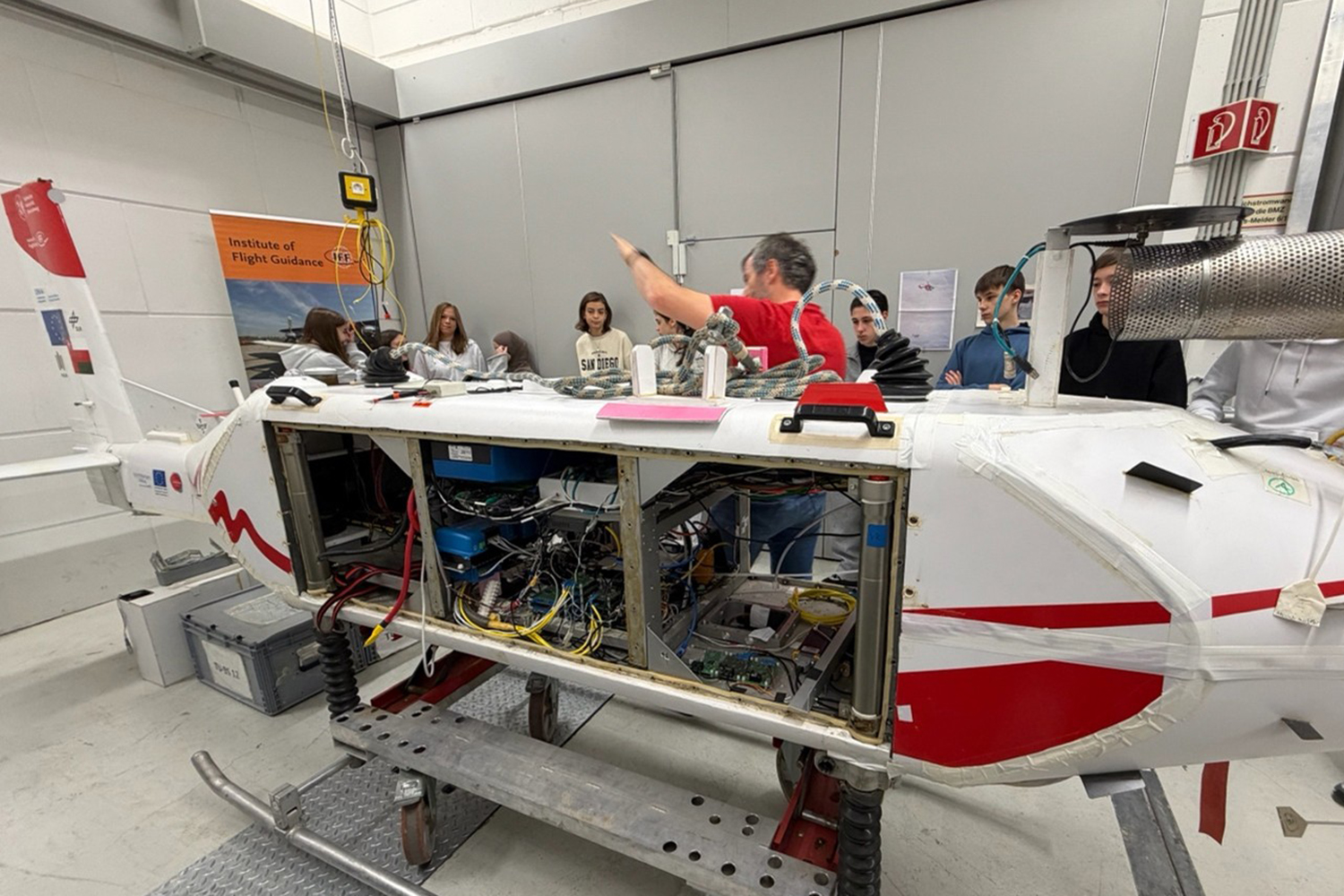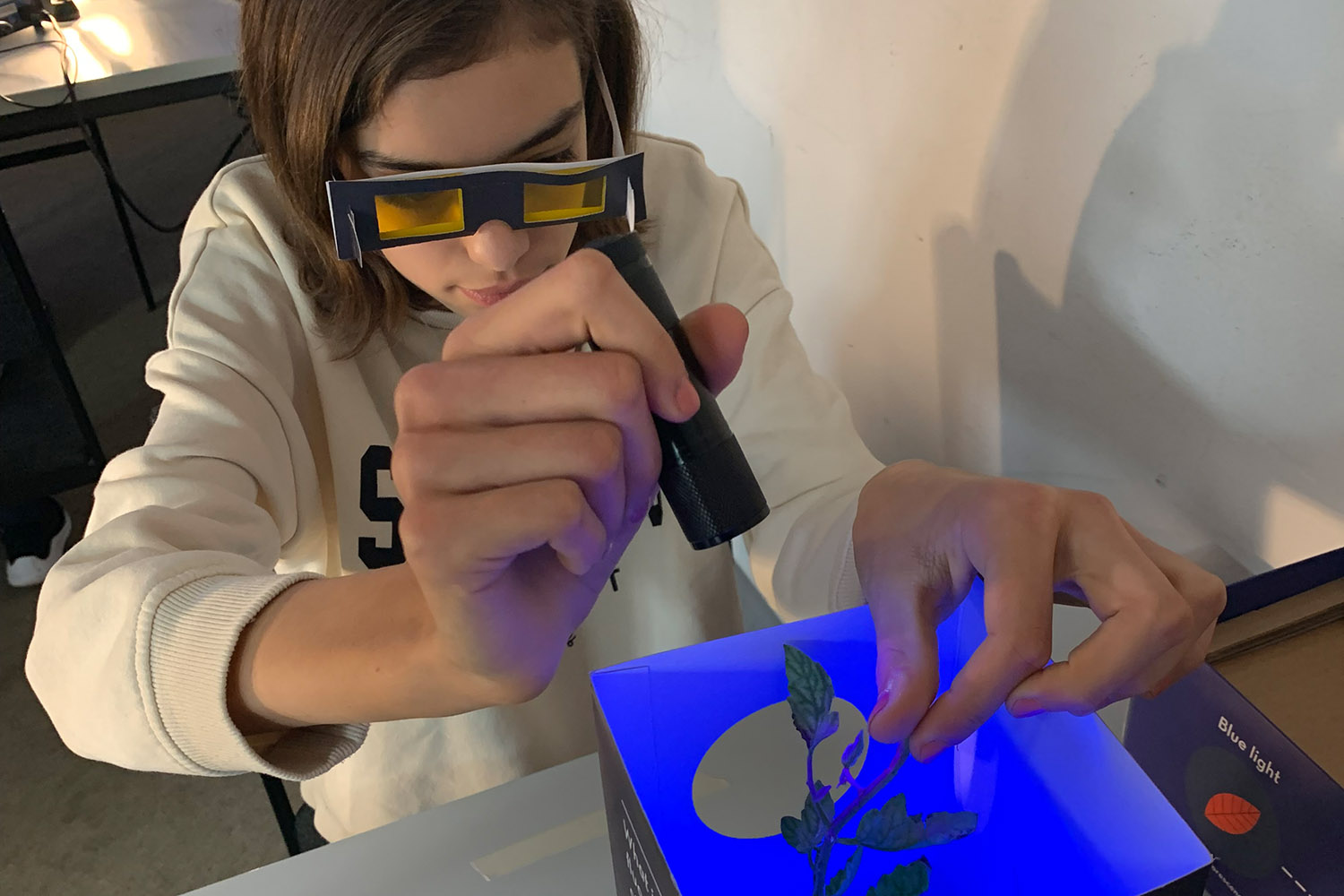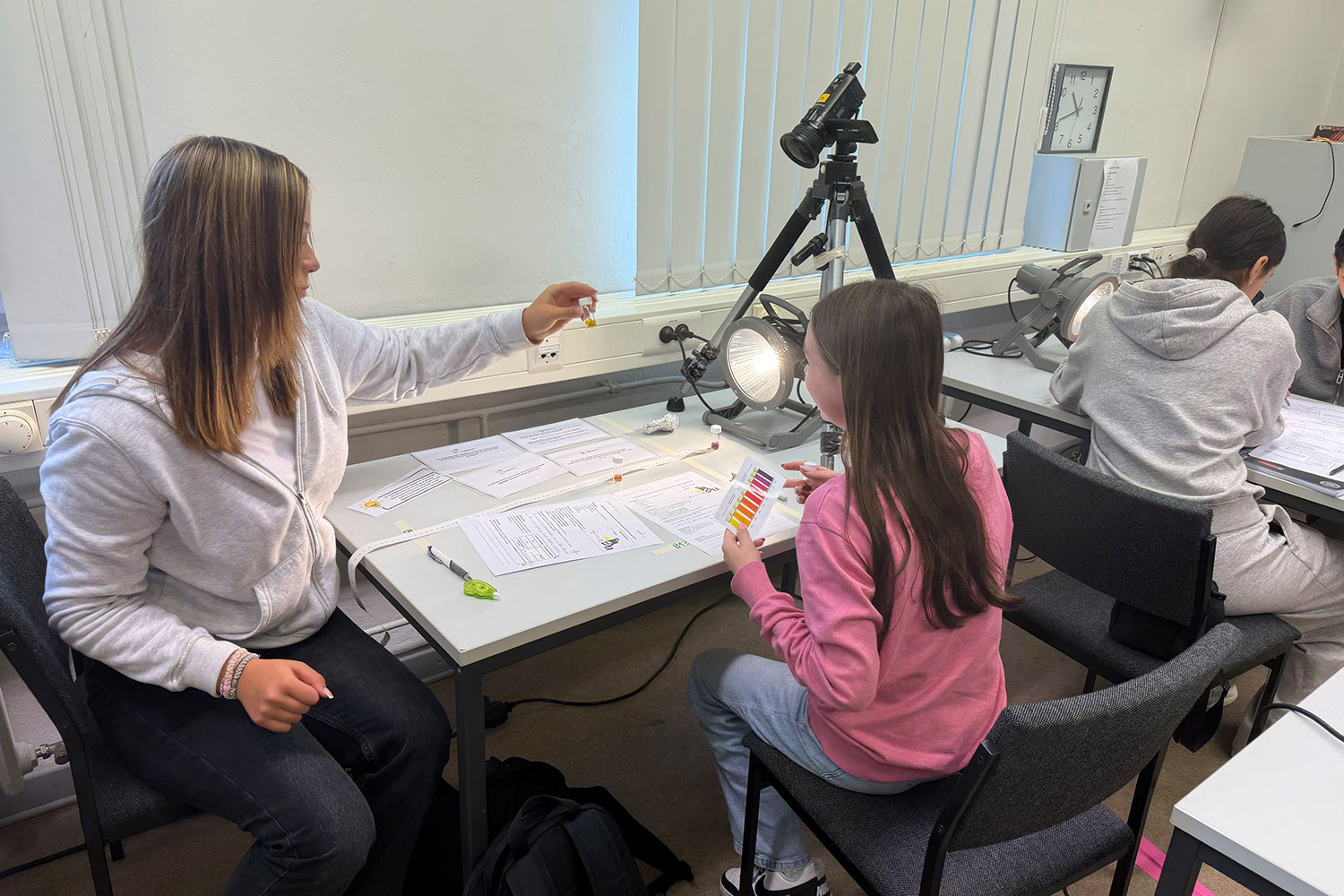HELiPOD: Science from the air inspires school students School students experience how plant stress is measured in a TU project
The HELiPOD@School project shows how exciting lessons can be when real research data, high-tech measurement technology and experiments from biology come together. The aim is to get school students excited about STEM subjects and enable them to look beyond the boundaries of individual disciplines. The project is funded by TU Braunschweig as part of ‘Ecoversity – Spaces for Collaboration’.

Dr. Falk Pätzold from the Institute of Flight Guidance explains the functions of the HELiPOD helicopter towed probe from TU Braunschweig. Photo credits: IFF/TU Braunschweig
The project day begins unusually: at the Institute of Flight Guidance, the lecture hall is quickly transformed into a biology laboratory. Thirteen eighth-grade students from a secondary school experiment with fluorescence and photosynthesis. They measure how plants absorb light, how algae react to different temperature and light conditions, and how the carbon dioxide content changes as a result. It quickly becomes clear that plants react to stress – such as heat or strong sunlight – with measurable biochemical adjustments. The processes are fascinating, but not easy to quantify.
The HELiPOD – a flying laboratory

Fluorescence provides information about photosynthetic activity – here is a comparison of a tomato plant that is already dying in November and a fresh tobacco plant. Image credit: IFF/TU Braunschweig
This is exactly where the HELiPOD helicopter-towed probe comes into play. The students gain insights into the structure and functioning of the flying measurement laboratory, which was used as part of the international ESA project FRM4FLUO. It was used to take fluorescence measurements over corn and tomato fields – data that otherwise only scientists get to see.
The young people then work with these real data sets themselves: they calculate average values, compare fields and draw their own conclusions. In doing so, they discover that, in this case, the tomato plants were warmer than the maize despite receiving the same amount of sunlight – while the maize fluoresced much more strongly and thus carried out active photosynthesis. A concluding ESA video on the future FLEX satellite mission, which aims to map plant stress globally, provides the broader context.
What makes research special

The students investigate the influence of light on the photosynthetic activity of algae balls. Image credit: IFF/TU Braunschweig
At the end of the morning, everyone agrees: “The experiment was fun,” say the participants. At the same time, there is a growing realisation that natural phenomena only become truly tangible through mathematics.
“You need maths for accuracy,” one student notes – followed by the tongue-in-cheek addition: “But maths is a bit more boring than biology.”
However, it is precisely this interplay that makes the project so valuable: biological experiments, modern measurement technology and mathematical evaluation intertwine and show how interdisciplinary current research works – and how exciting science can be when you experience it for yourself.
